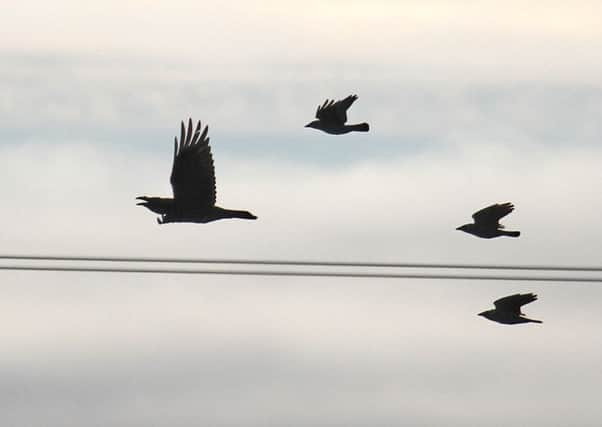Country & Coast: Minor recovery of bird long regarded harbinger of doom


The raven was once widespread across the old Ridings, and its habitat was not so confined to hills and fells as it is today.
Lowland nesting locations included Bishop Wood to the east of Selby and the grounds of Walton Hall near Wakefield. One pair even nested on the ornate stonework of Beverley Minster.
Advertisement
Hide AdAdvertisement
Hide AdBut many were killed by poisoned baits put out by farmers for foxes and vermin like rats, while others were shot to protect game bird interests, and over the decades ravens were gradually driven into the remotest parts of the Pennines, Dales and North York Moors.
At one point Yorkshire’s breeding population was said to have dwindled to just a couple of pairs near the West Riding-Westmorland border.
Since then there has been a minor recovery and Doug Simpson, one of a group of volunteers who monitor the bird in the Yorkshire Dales National Park, tells me his overall impression is that numbers have slowly improved over the last 15 years or so.
In 2015, of 21 known nesting sites ravens used 10 of them successfully, with a total of 29 young birds being fledged.
Advertisement
Hide AdAdvertisement
Hide Ad“This was the first time that we recorded as many as 10 successful sites,” Mr Simpson said.
“It’ll be interesting to see what this year produces.”
One site he was watching in the southern part of the National Park was next to a very popular footpath. Despite frequent disturbance from walkers the birds bred there for several years. However, another pair which chose a well-frequented area hasn’t been so successful. Their nest on the exposed ledge of a crag used for outdoor pursuits has disappeared.
Mr Simpson pointed out that there is a vast area of potentially suitable habitat to cover and admits he and the other people involved in monitoring ravens can never be sure that every nest was located.
They may be a large and sometimes noisy bird, he said, but they are very good at tucking themselves away in places which few people ever visit.
Advertisement
Hide AdAdvertisement
Hide AdRavens also now have minor footholds in the South Pennines as well as the Peak District National Park to the west of Sheffield, and although protected under the Wildlife and Countryside Act they do not have the ‘schedule one’ status of rarer birds like the peregrine, which imposes stiff fines or even imprisonment on anyone found guilty of killing it or stealing the eggs.
Ravens remain vulnerable, however.
They are still known in some parts of Northern England as “croupy craws” and in country lore the bird has long been regarded as a harbinger of doom. Merely hearing the croak of a raven was considered to be a bad omen.